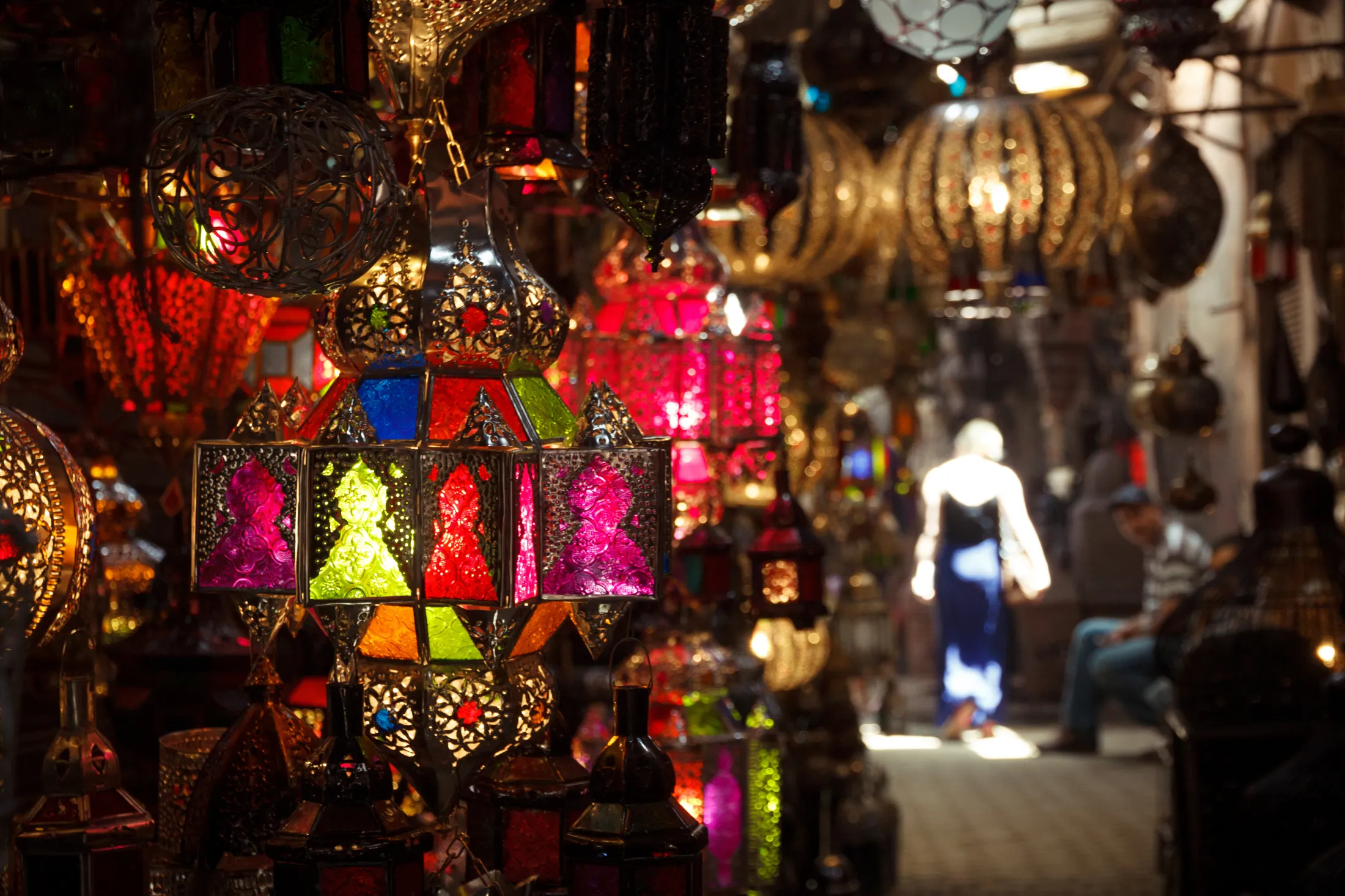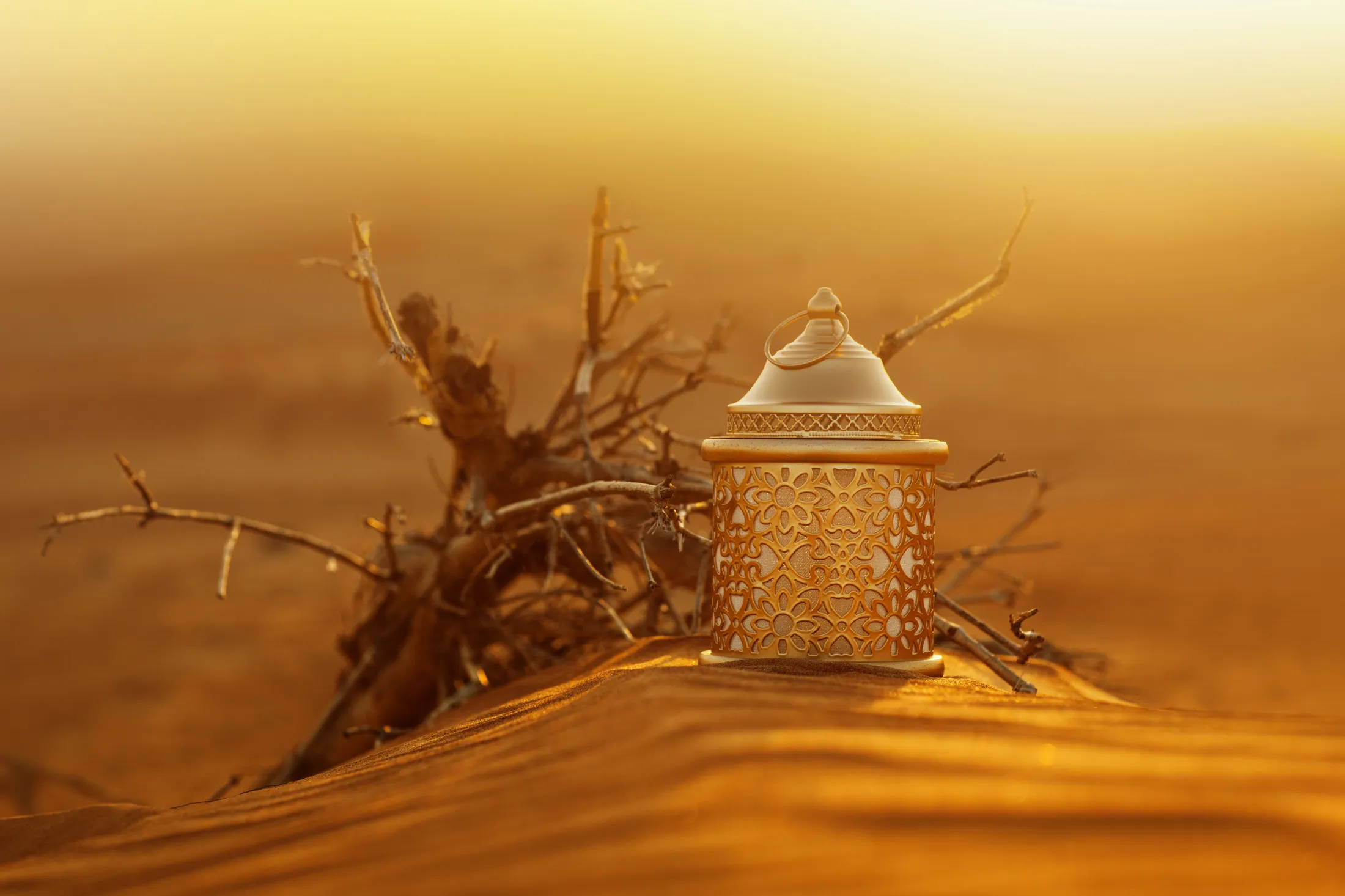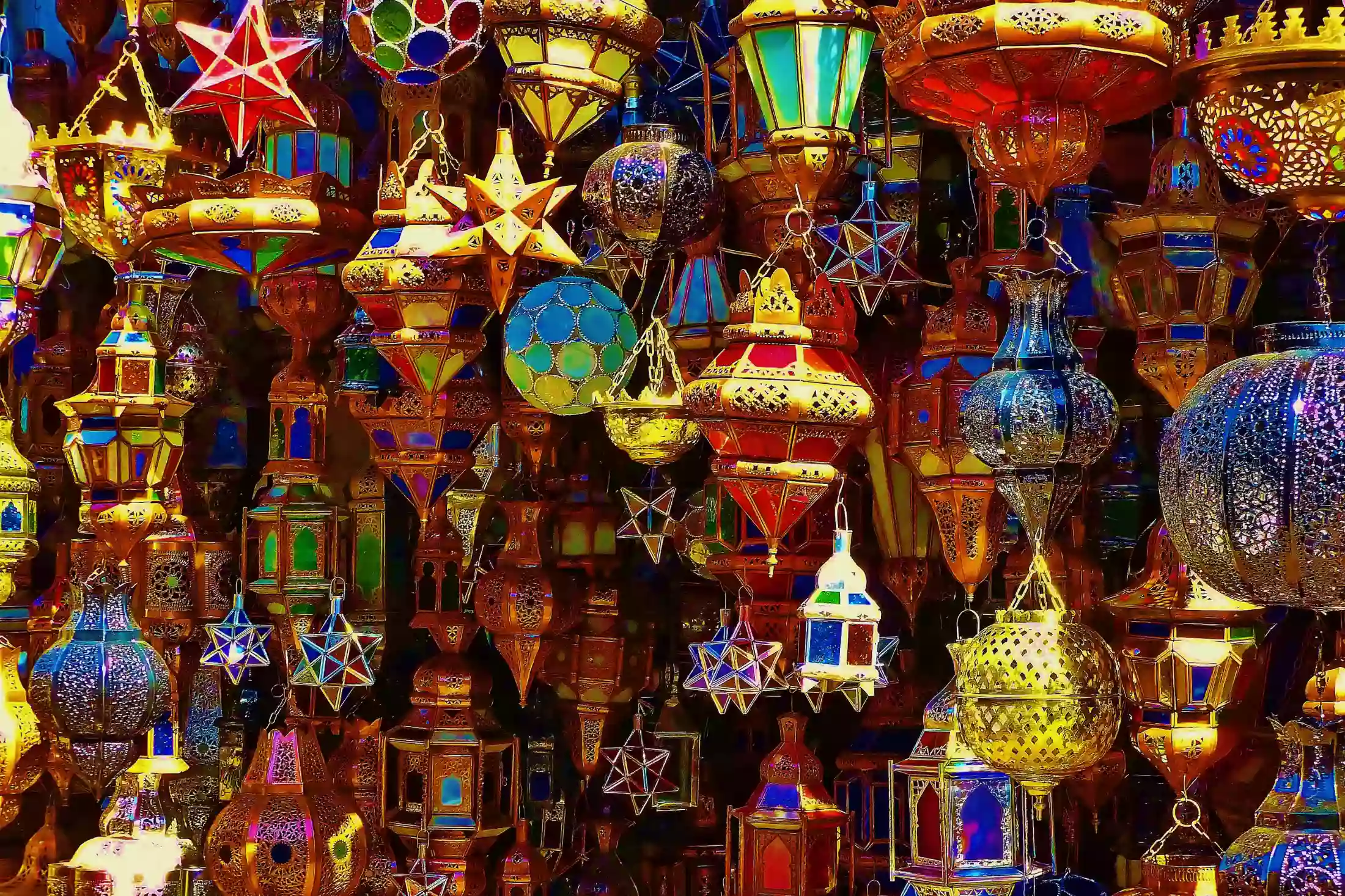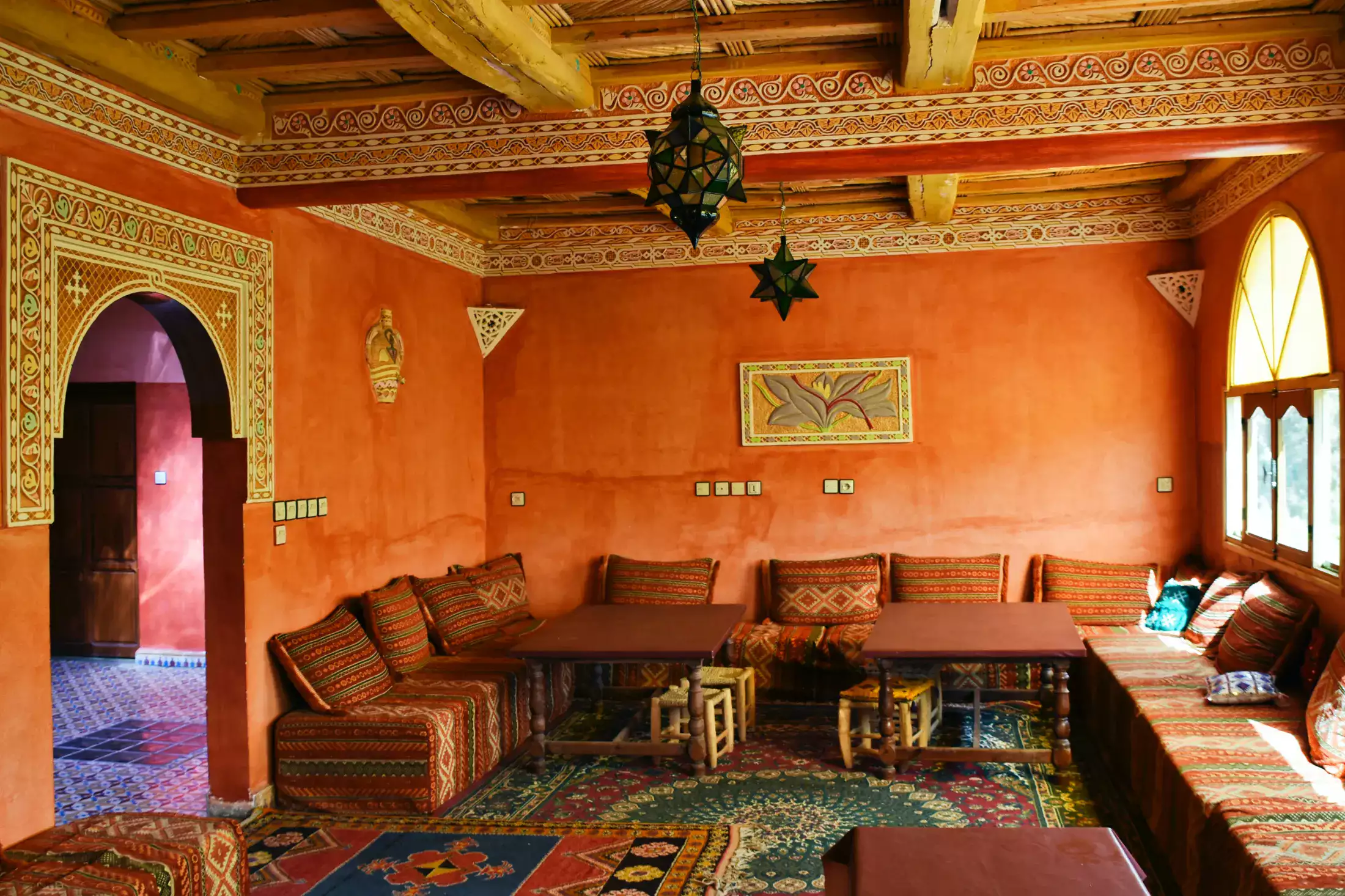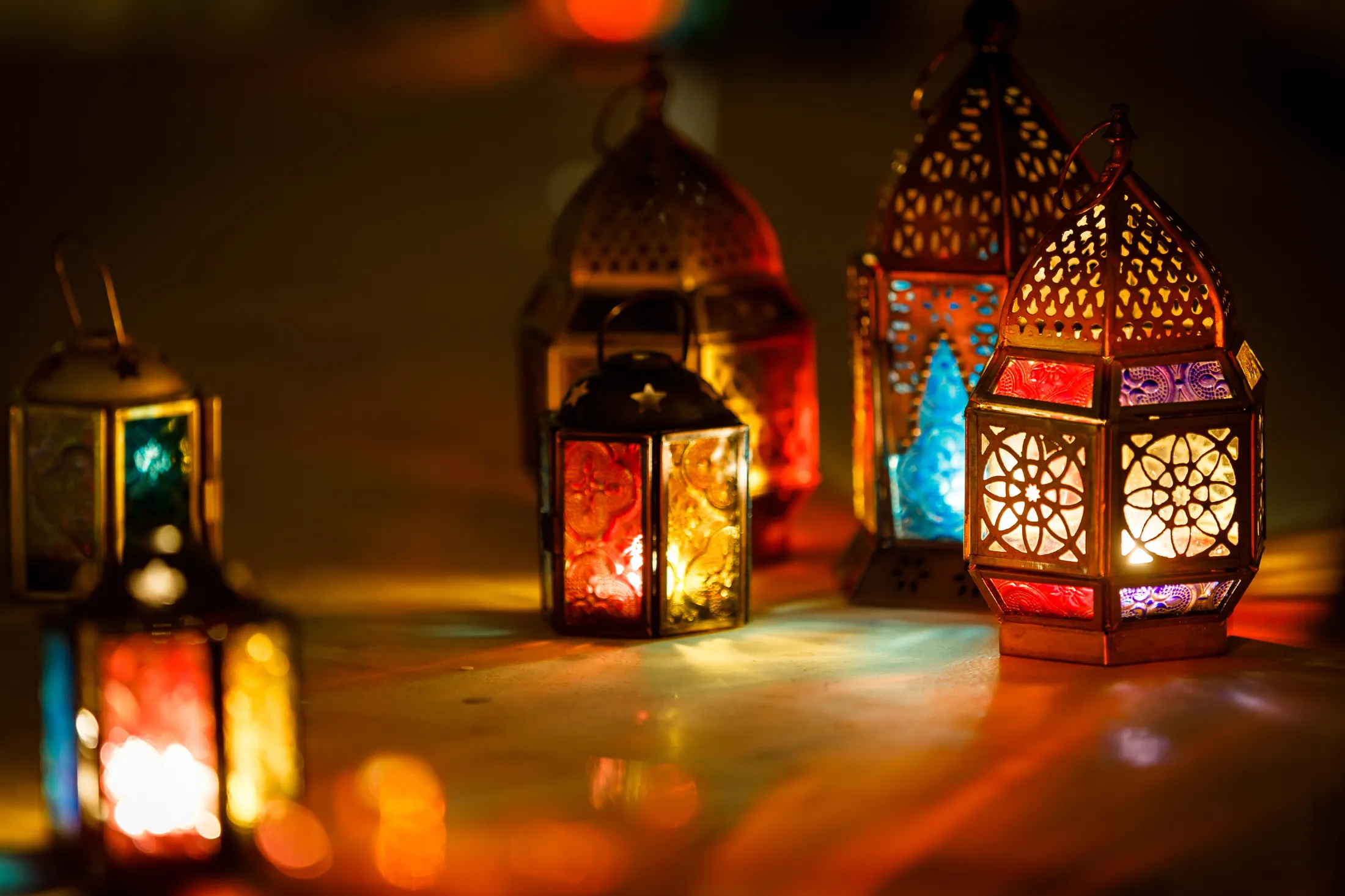As dusk descends and daylight fades, a soft, ethereal light glimmers in many homes and streets across Morocco. This distinctive glow emanates from a piece of decor that holds deep cultural and historical significance – the Moroccan lamp, known as the Fanoos.
A classic icon of Moroccan and Middle Eastern culture, the Fanoos has an allure that stretches far beyond its practical function, offering a timeless tribute to an ancient tradition, it’s more than a simple light source, the Fanoos is a time-honored symbol of culture and spirituality, a decorative item that holds a special place in the Moroccan home and heart, and the star of the month of Ramadan.
In Arabic, “Fanoos” translates to “lantern” or “lamp,” but the Fanoos is far more than a simple tool to dispel the dark. It’s a masterwork of craftsmanship and design, an emblem of the rich Moroccan culture, and an evocative centerpiece in festivals.
Fanoos: A Tradition Holder
Traditions have a way of telling us stories from the past, and the Fanoos holds many. One such tradition takes us back to Medieval Egypt. It says that the people of Egypt would light up the Fanoos lanterns to welcome Caliph Muizz when he came to Cairo in Ramadan. Over time, this act of welcome and celebration grew into a bigger tradition. The Fanoos became a key part of the Ramadan celebrations.
The history of the Fanoos goes back even further, to the times when the Pharaohs ruled Egypt. They used torches, much like the Fanoos, during celebrations. The Egyptians had a five-day festival to celebrate the rising of the star Sirius. During this festival, they would light up the streets with torches to celebrate the birthdays of five gods – Osiris, Horus, Isis, Seth, and Nephtys. Later, even early Christians found value in this light. The Egyptian historian Al-Maqrizi wrote that these torches or candles were used for celebrations during Christmas.
Craftsmanship of Fanoos
A Fanoos lantern is a piece of art. Most Fanoos lanterns are made of metal and glass. Craftsmen spend hours carefully working on each lantern. They etch detailed patterns on the metal and pick out glass in various colors. When the Fanoos is lit, the light passes through the glass and metal, creating a beautiful pattern of light and shadow. This transforms the Fanoos into a source of light that brings warmth and a unique feel to any place.
The Role of Fanoos in Moroccan Life and Culture
In Morocco, the Fanoos is more than a Ramadan tradition. It has become a part of everyday life. It lights up homes, streets, and even places like cafes and restaurants throughout the year. Its bright light makes any place feel warm and welcoming.
When it comes to Moroccan decor, the Fanoos is a key piece. It is everywhere – hanging from ceilings, standing on tables, or lighting up outdoor spaces like patios. The unique design of the Fanoos, with its mix of glass and metal, adds a special touch to any space. It brings in the charm and beauty of Moroccan culture into everyday life, making it a beloved piece in homes and public spaces alike.
Fanoos in Moroccan Decor
Within the realms of interior decor, Moroccan style has solidified its position as a great choice for its visual appeal and distinctive elements. Central to this design is the Fanoos. The Moroccan decor style presents a masterful blend of textures, patterns, and colors, each resonating with the rich cultural history of the region. The Fanoos, with its unique structure and design, seamlessly integrates into this narrative. The lanterns, often bearing intricate, geometric patterns on their surface, interact with the light they emit to cast a mesmerizing dance of shadows and illumination. This interplay transforms the spaces they occupy, infusing them with an ambiance that is undeniably Moroccan.
Fanoos lanterns often serve as key focal points within a space. Their presence evokes a sense of mystique and warmth, echoing the hospitable spirit that is characteristic of Moroccan culture. Moreover, their functionality as a light source makes them an essential decor element, proving that practical utility and aesthetic charm can coexist harmoniously.
Fanoos Across the World
In the contemporary world, the Fanoos has traveled far beyond its origins and religious undertones, finding favor in a variety of settings worldwide. Many homes, irrespective of their cultural or geographical context, have embraced the Fanoos as an addition to their decor. The lantern serves not only as a source of soft, ambient lighting but also as a cultural statement, a nod to the timeless beauty of Middle Eastern design.
In the hospitality industry, the Fanoos has found a prominent place in restaurants, hotels, and cafes. Establishments looking to create a unique and welcoming ambiance have utilized these lanterns to great effect. Their soft, diffused light and distinctive design contribute to an environment of relaxation and intrigue, enhancing the overall dining or staying experience.
Shopping malls, too, have recognized the allure of the Fanoos. In a setting where visual appeal is crucial, these lanterns serve as decorative elements that capture attention and inspire a sense of wonder. Arrangements of Fanoos lamps in varying sizes, shapes, and designs are not uncommon, with each unique combination forming an enchanting spectacle of light and shadow.
The Moroccan lamp carries within its radiant light a rich heritage of cultural, historical, and spiritual significance. It stands as a testament to the enduring legacy of a tradition that has illuminated countless homes and hearts over centuries. As an emblem of hope and celebration, the Fanoos continues to spread its gentle, warm light, transcending geographical boundaries. It is a beautiful testament to a culture rich in history and tradition. Whether as a symbol of Ramadan or as a decorative element in homes and public spaces, the Fanoos continues to shine, casting its captivating spell far and wide. As you look at a Fanoos flickering softly in a quiet corner of your home, remember the journey it has taken through the annals of history, bringing with it tales of times gone by and illuminating the path ahead.

